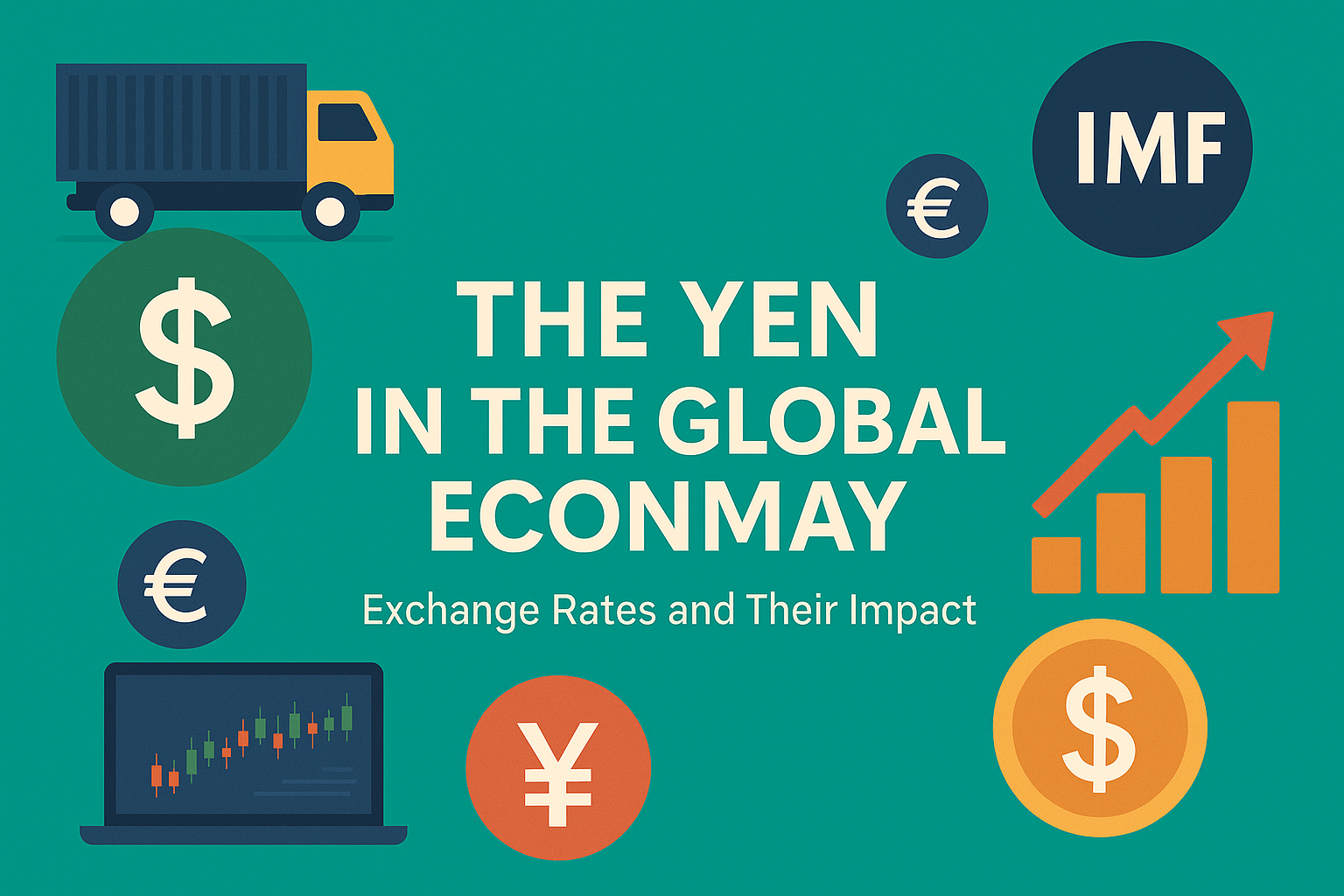― A Macroeconomic Perspective on Currency Movements and Economic Forecasting ―
Introduction: Why Exchange Rates Matter More Than Ever
In an era marked by pandemics, geopolitical turbulence, inflation shocks, and aggressive monetary tightening, the global economy has entered a new phase of volatility and structural transformation. In this uncertain landscape, exchange rates have emerged not just as currency conversion mechanisms but as real-time reflections of investor sentiment, policy credibility, trade dynamics, and sovereign risk.
This report presents an in-depth analysis of why exchange rates are among the most powerful and practical indicators for forecasting macroeconomic trends, using a multidisciplinary lens that connects finance, trade, and policy.
A Visible Expression of Global Capital Flows
Exchange rates are the final outcome of cross-border capital allocation. A strengthening U.S. dollar, for instance, signals global capital flowing into dollar-denominated assets, often driven by expectations of growth, stability, or higher returns.
Case Study: The 2022 Dollar Rally
As the Federal Reserve embarked on rapid rate hikes to combat inflation, the dollar surged. The consequences were immediate and global: emerging markets like Egypt and Argentina experienced currency depreciation, rising external debt burdens, and inflation spikes.
Exchange rate trends act as a macro-financial “thermometer,” capturing trust, fear, and liquidity flows in real time.
Direct Impact on Trade Competitiveness and Inflation
Exchange rates are a primary determinant of import and export prices, which in turn affect corporate margins, consumer prices, and inflationary pressures.
- Currency depreciation → Export competitiveness improves but import costs rise → Potential cost-push inflation
- Currency appreciation → Imports become cheaper → Deflationary or disinflationary effects
For economies heavily dependent on imported goods or energy (like Japan or the EU), exchange rate fluctuations are early warning signals for inflation risk, especially in times of commodity shocks or supply chain disruptions.
Interpreting Central Bank Policy through Currency Trends
Exchange rates closely reflect the divergence in monetary policy stances across countries. Interest rate differentials drive currency valuations through carry trades and capital reallocation.
By observing exchange rate movements, economists can anticipate future shifts in policy, even before central banks officially change course. For instance, a persistently weak currency might pressure a central bank into tightening to defend price stability or financial credibility.
A Real-Time Proxy for Geopolitical Stress
In times of conflict or instability, currency markets become escape routes for global capital, flocking toward safe-haven assets.
- Japanese yen and Swiss franc → Traditional “safe-haven” currencies in times of war or crisis
- Gold and U.S. dollar → Favored during global financial stress
Example: The yen often appreciates when geopolitical risks rise in East Asia, regardless of Japan’s own domestic economy.
In this sense, exchange rates serve as real-time indicators of geopolitical fear and trust in state institutions.
A Diagnostic Tool for Emerging Market Stability
For emerging economies, currency movements are critical in assessing macroeconomic health and external vulnerability.
- Sharp currency depreciation → Pressure on foreign reserves → Higher cost of servicing external debt
- Currency stability → Confidence in inflation control and debt sustainability
This makes exchange rates early detection tools for upcoming balance of payments crises or IMF interventions.
Conclusion: Exchange Rates as the Nexus of Global Forces
Exchange rates offer a synthesized, dynamic, and forward-looking view of the global economy. They capture the interplay between monetary policy, trade flows, capital allocation, geopolitical events, and investor psychology.
In an interconnected world where economies can no longer be understood in isolation, the exchange rate stands as a mirror reflecting both structural fundamentals and cyclical tensions.
As such, economists seeking to understand or predict the trajectory of the global economy must start with a deep understanding of currency markets.
📚References
International Monetary Fund (IMF), External Sector Report, 2023
https://www.imf.org/en/Publications/ESR
Bank for International Settlements (BIS), Triennial Central Bank Survey of Foreign Exchange Markets, 2022
https://www.bis.org/statistics/rpfx.htm
Federal Reserve Board, Monetary Policy Report, July 2022
https://www.federalreserve.gov/monetarypolicy/mpr_default.htm
World Bank, Global Economic Prospects, January 2024
https://www.worldbank.org/en/publication/global-economic-prospects
Bloomberg Terminal FX Data, 2020–2024
(Access via Bloomberg Terminal – subscription required)
https://www.bloomberg.com/markets/currencies
Eichengreen, Barry. Globalizing Capital: A History of the International Monetary System, 2019
https://press.princeton.edu/books/paperback/9780691193908/globalizing-capital
Reinhart, Carmen M. & Rogoff, Kenneth S. This Time Is Different: Eight Centuries of Financial Folly, 2011
https://press.princeton.edu/books/paperback/9780691152646/this-time-is-different


